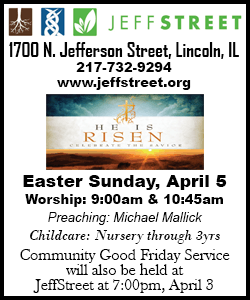|
 The U.S. central bank's latest policy meeting will conclude with
certainty expected on one point: it will likely discard a pledge to
remain "patient" before hiking rates, trimming one of the final
verbal cues it has used through crisis, recession and recovery to
describe its intent to keep rates near zero for a period of time. The U.S. central bank's latest policy meeting will conclude with
certainty expected on one point: it will likely discard a pledge to
remain "patient" before hiking rates, trimming one of the final
verbal cues it has used through crisis, recession and recovery to
describe its intent to keep rates near zero for a period of time.
The move would mark an important moment for Fed Chair Janet Yellen
who, despite being seen as a policy dove, has overseen a steady
whittling away of loose money promises: the policy statement during
her first year as Fed chief shrank from 790 words to 529.
While the turn in language would open the door to an initial rate
hike as early as June, the uncertain path of the global economy
remains a dilemma for central bank officials who say they want more
confidence in the U.S. recovery and the eventual rise of inflation
before committing to a rate "lift-off."
The latest policy statement is scheduled to be released at 2 p.m.
EDT (1800 GMT). The Fed will also provide updated economic forecasts
by Fed policymakers. Yellen will also hold a press conference
following the two-day meeting.

The economic data, however, have been muddy - strong job creation,
continued growth, and generally healthy consumer demand in the
United States, but a global collapse in oil prices and a rapid
run-up in the dollar that could mean the Fed remains far from its 2
percent inflation target.
U.S. crude prices remained mired in the low $40 dollar a barrel
range on Tuesday, and the Organization of Petroleum Exporting
Countries acknowledged it may be the end of this year before low
prices prompt higher-cost producers in the United States and
elsewhere to trim supply.
Progress toward the Fed's inflation goal may be elusive until the
price of oil finds a bottom and stabilizes.
A dollar that has soared more than 20 percent against major
currencies over the past year also means imported goods are cheaper,
while U.S. exports may be nicked, dragging down growth.
Ultimately, Fed officials say they are not concerned about either
trend. Low oil prices have put what the IHS Global Insight
consulting firm estimates to be around $2,000 into the pockets of
the average American family - money that can support consumer demand
and add to gross domestic product.
Fed officials also regard the dollar's appreciation as a vote of the
world's confidence in the U.S. economic recovery, as investment
flows towards what is now one of the few global bright spots.
"The stronger dollar is not going to be a decisive factor in the
Fed's thinking," Capital Economics chief global economist Julian
Jessup wrote last week. "The U.S. recovery is robust enough to
weather a firmer currency."
[to top of second column] |

'A COIN FLIP'
But the rising dollar and other economic data will partly determine
whether the Fed opts for June, September or another date in what is
now becoming a meeting-by-meeting debate over when to raise rates.
A near majority of Fed officials publicly have endorsed the idea of
removing the patience pledge, putting investors and the public on
notice that a rate hike could occur at any point from June onward.
"My guess is that they will drop 'patient,'" said Alan Blinder, a
former Fed vice chair, who added that the choice between June and
September for an initial rate hike "looks like a pretty close call
... It feels more like a coin flip to me."
Between strong U.S. monthly job creation and steady economic growth,
the Fed's near-zero interest rate stance has seemed increasingly
anachronistic, according to a growing group of Fed officials,
economists and analysts who follow the central bank.
The federal funds rate has been at its low point since December,
2008. The last time the Fed raised rates was in June, 2006, when a
roaring housing market and strong growth prompted it to push its
target rate to 5.25 percent.
Investors and economists are split over whether the initial hike
will come in June, or in September. Trading in Federal Funds futures
contracts point to a September hike, while a recent Reuters poll of
70 economists indicated an even split between June and later in the
year.
(Reporting by Howard Schneider; Editing by Paul Simao)
[© 2015 Thomson Reuters. All rights
reserved.] Copyright 2015 Reuters. All rights reserved. This material may not be published,
broadcast, rewritten or redistributed.

|